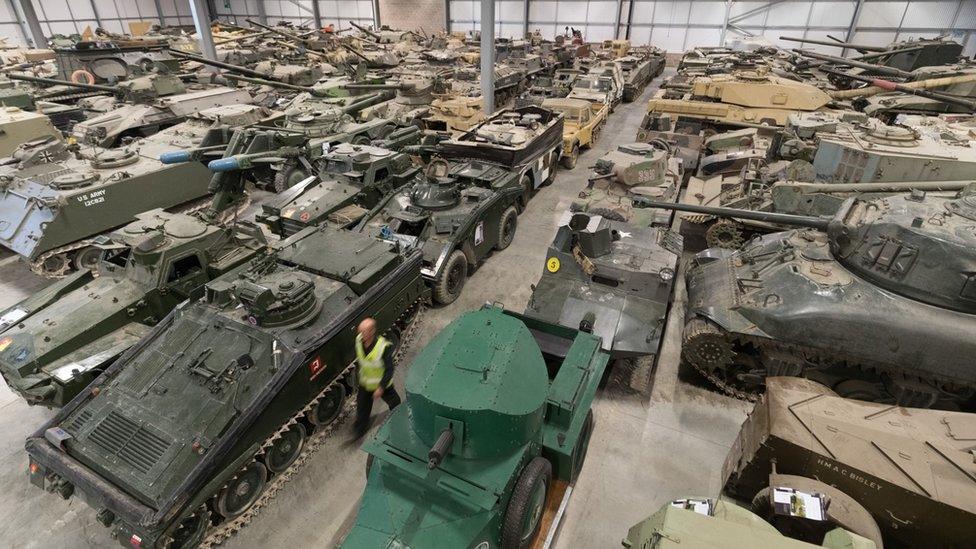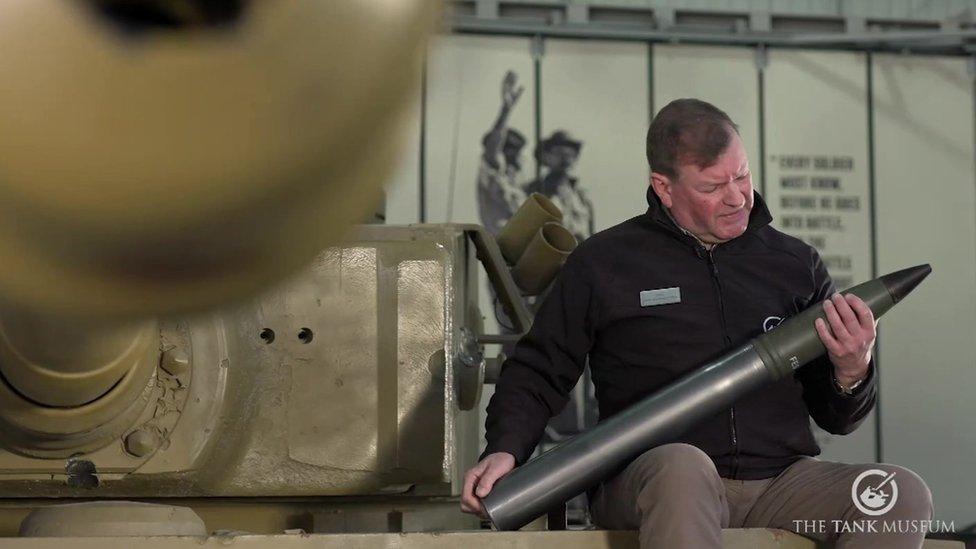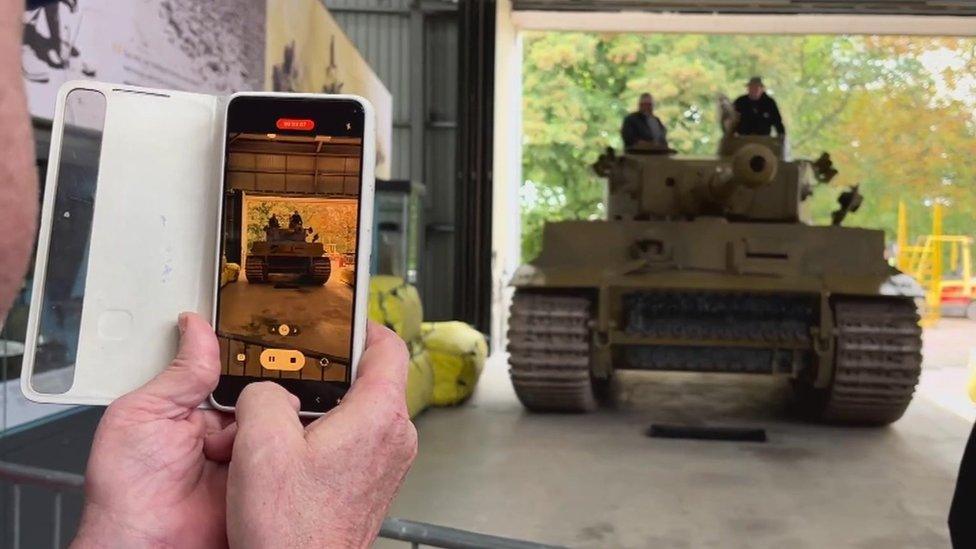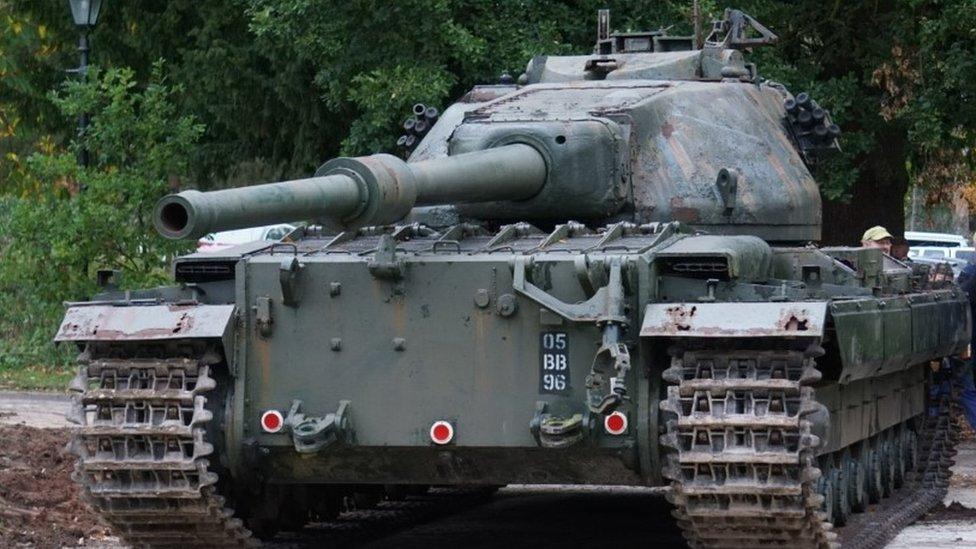Bovington: Tank museum videos become global social media hit
- Published

The Tank Museum has a huge collection of military vehicles
A museum tucked away in rural Dorset has described how tank enthusiasts from around the world have made it an unlikely YouTube success.
The Tank Museum in Bovington has more than 100 million views on its channel.
This means it reaches a greater audience on the video sharing platform than the likes of the Louvre in Paris and the Met in New York.
It puts the social media success down to the "passion and knowledge" of its expert video presenters.

Museum worker Chris Copson said he has been recognised in the street because of his videos
Nik Wyness, the museum's head of marketing, said the bulk of the audience was based in the US and that YouTube was "an essential means of reaching a wider audience".
"No-one is going to visit us if they don't know we exist," he said.
He added that it helped "fulfil our mission to tell the story of the tank and the people that served in them".
Its YouTube channel has more than 500,000 subscribers and the videos feature well-known contributors such as comedian and military enthusiast Al Murray and historian James Holland.

The Tank Museum showcased its collection during an open-air display in August
Chris Copson, education officer at the museum, feels he is an unlikely YouTube star - yet some of his videos have attracted about two million views.
He has even be recognised in the street, something he said he believed would never happen "in a million years".
His most recent video raced to more than 100,000 views and looks at the significance of the armoured personnel carrier, which he describes as a "battle taxi" used to transport soldiers to the frontline.
Most of the venue's online fans are middle-aged men but 18-year-old Logan Clegg visited from Canada.

The rich variety of military vehicles makes it a hit with tank enthusiasts
He told the BBC he would never have realised the place existed if had not been on social media.
More than a quarter of its turnover, about £2m, is now generated online.
The registered charity said its global online success was an "increasingly important source of revenue".
The museum first opened to the public in 1947 and its growing web community helped it to survive during the pandemic, when it was forced to close.
Coming to look at the tanks can be a memorable experience for enthusiasts but for many people accessing the museum online is just as fascinating.

Follow BBC South on Facebook, external, Twitter, external, or Instagram, external. Send your story ideas to south.newsonline@bbc.co.uk, external.
Related topics
- Published5 November 2022

- Published27 February 2023

- Published11 November 2022
